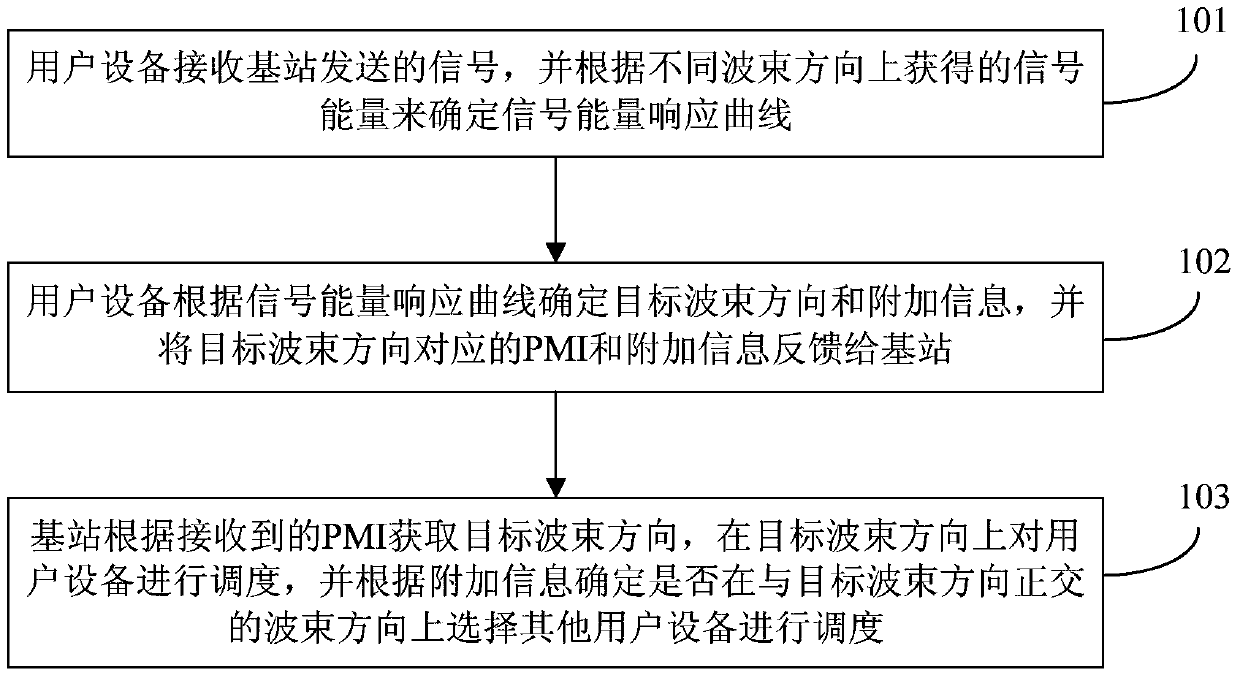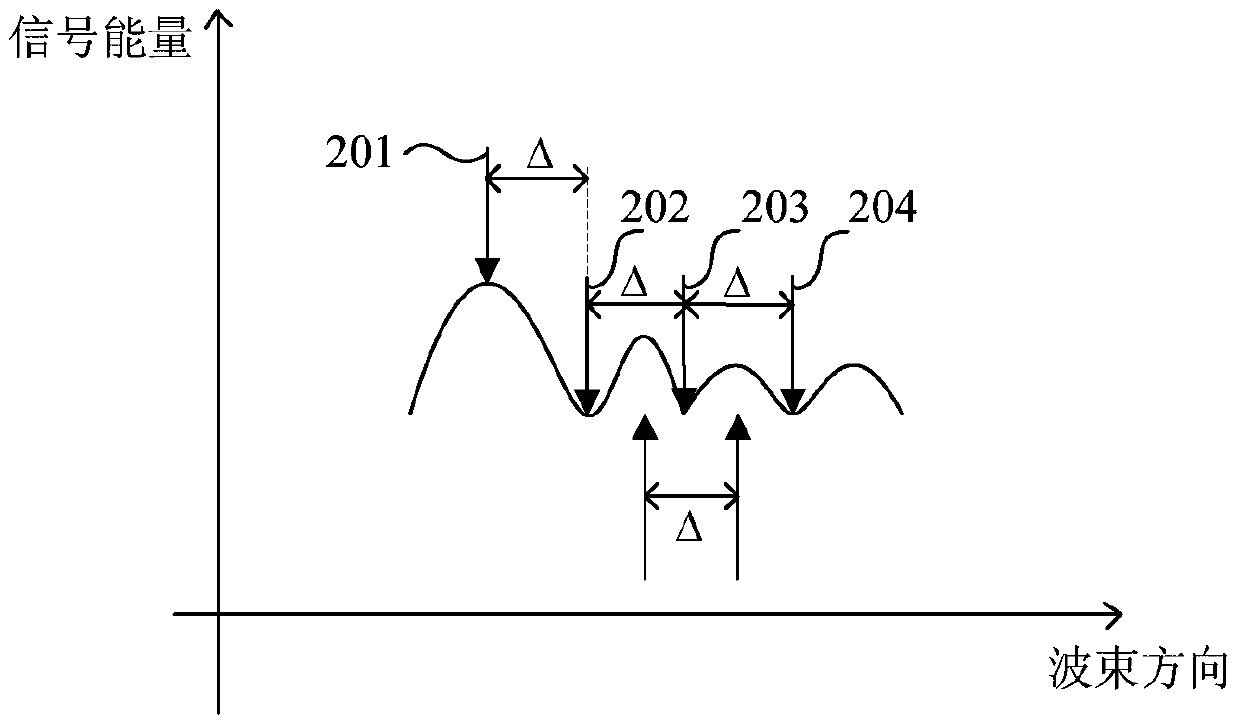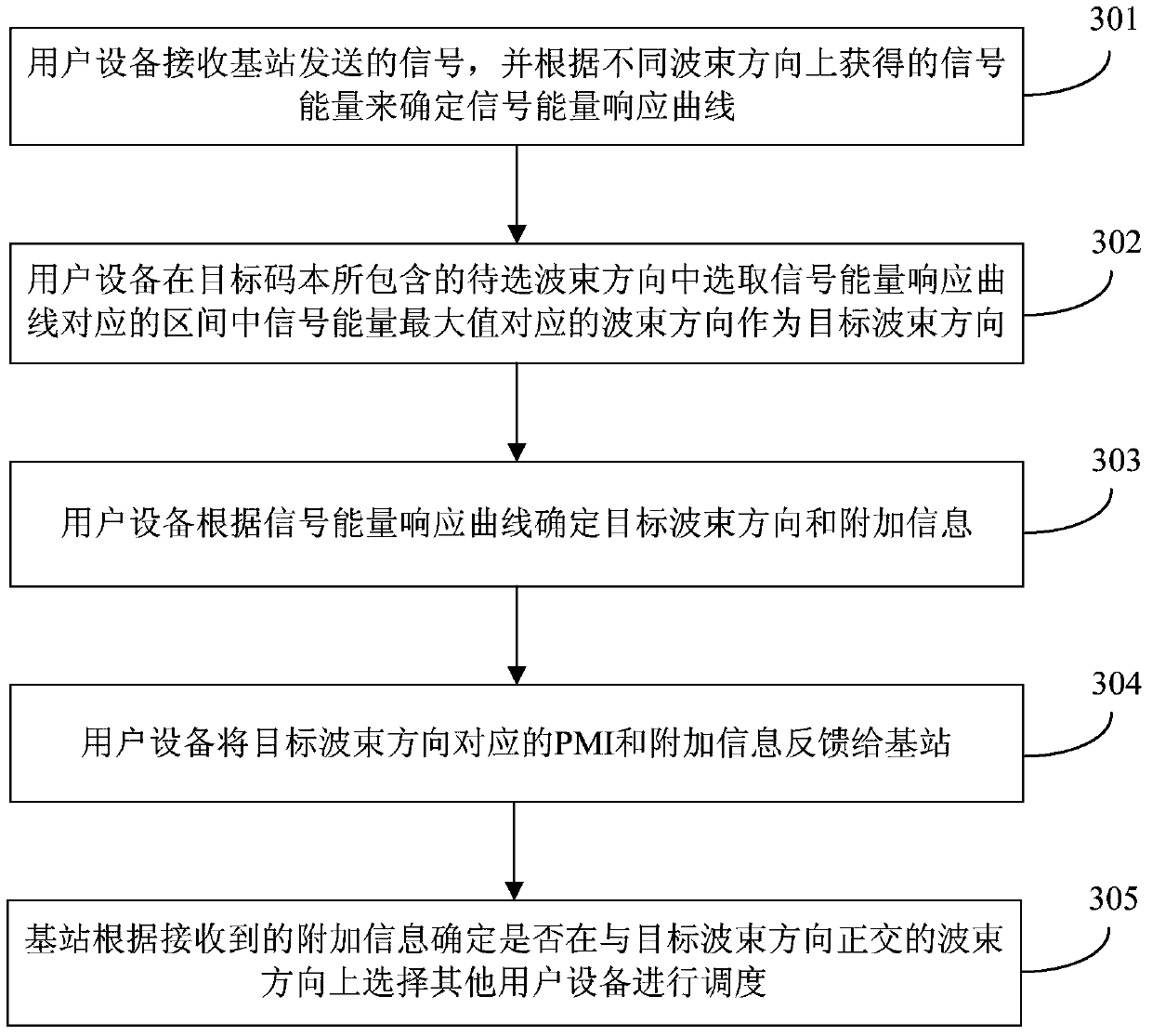A user scheduling method and system based on multi-user multiple-input and multiple-output
A multi-input multi-output, user scheduling technology, applied in the field of communication, can solve problems such as transmission interference of different users, and achieve the effect of improving performance and reducing the amount of feedback
- Summary
- Abstract
- Description
- Claims
- Application Information
AI Technical Summary
Problems solved by technology
Method used
Image
Examples
Embodiment 1
[0027] figure 1 It is a schematic flowchart of a user scheduling method based on multi-user multiple-input and multiple-out provided in Embodiment 1 of the present invention. The method can be executed by a user scheduling system based on multiple-user multiple-input and multiple-output. Software and / or hardware implementation in an input-multiple-output user scheduling system. Such as figure 1 As shown, the method includes:
[0028] Step 101, the user equipment receives the signal sent by the base station, and determines the signal energy response curve according to the signal energy obtained in different beam directions.
[0029] The user scheduling system based on MIMO in this embodiment includes a base station and user equipment. When the base station configures multi-antenna transmission, beams directed in different directions can be formed by adjusting phases between different antennas (corresponding to different direction vectors). Exemplarily, the signal sent by th...
Embodiment 2
[0040] image 3 It is a schematic flowchart of a user scheduling method based on multi-user multiple-input and multiple-out provided by Embodiment 2 of the present invention. This embodiment is optimized on the basis of the above-mentioned embodiment. In this embodiment, the user equipment is based on the sub-band feedback mode The PMI and additional information are fed back in each subband, and the feedback can be periodic or aperiodic.
[0041] The method of the present embodiment comprises the steps:
[0042] Step 301, the user equipment receives the signal sent by the base station, and determines the signal energy response curve according to the signal energy obtained in different beam directions.
[0043] In step 302, the user equipment selects the beam direction corresponding to the maximum value of the signal energy in the interval corresponding to the signal energy response curve from the candidate beam directions included in the target codebook as the target beam dir...
Embodiment 3
[0057] Figure 7 A structural block diagram of a user scheduling system based on multi-user multiple-input multiple-output provided in Embodiment 3 of the present invention, which can be specifically implemented by software and / or hardware configured in the system, and can be implemented by executing a multi-user multiple-input multiple-output based The user scheduling method is used to perform multi-user scheduling. Such as Figure 7 As shown, the system includes a user equipment 71 and a base station 72;
[0058]The user equipment 71 includes a signal energy response curve determination module 711 and a feedback module 712 . Among them, the signal energy response curve determination module 711 is used to receive the signal sent by the base station, and determine the signal energy response curve according to the signal energy obtained in different beam directions; the feedback module 712 is used to determine the target according to the signal energy response curve beam dir...
PUM
 Login to View More
Login to View More Abstract
Description
Claims
Application Information
 Login to View More
Login to View More - R&D
- Intellectual Property
- Life Sciences
- Materials
- Tech Scout
- Unparalleled Data Quality
- Higher Quality Content
- 60% Fewer Hallucinations
Browse by: Latest US Patents, China's latest patents, Technical Efficacy Thesaurus, Application Domain, Technology Topic, Popular Technical Reports.
© 2025 PatSnap. All rights reserved.Legal|Privacy policy|Modern Slavery Act Transparency Statement|Sitemap|About US| Contact US: help@patsnap.com



